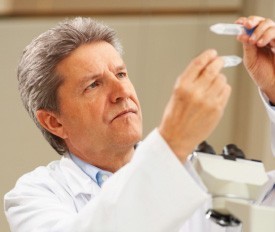The National Rosacea Society (NRS) has awarded funding for two new studies in addition to continuing support for five ongoing studies during the year as part of its research grants program to increase knowledge and understanding of the potential causes and other key aspects of rosacea.

"We are pleased to provide support for these important new studies, which build upon earlier findings that have added significantly to our knowledge about the causes of rosacea,” said Dr. Mark Dahl, chairman of the NRS Medical Advisory Board, which selects grant applications for funding.
"Thanks to the donations of thousands of individuals with rosacea, ongoing research is now producing a significantly better understanding of the disease process and potential new advances in therapy."
Dr. Anna Di Nardo, associate professor of medicine at the University of California-San Diego, and colleagues were awarded $25,000 to study whether blocking the activity of mast cells in individuals with rosacea may alleviate inflammation. In an NRS-funded study completed earlier this year, Dr. Di Nardo’s group discovered that mast cells, located at the interface between the nervous system and the vascular system, are the “missing link” between rosacea triggers and inflammation. Strategically positioned just below the skin’s outer layer, mast cells have numerous receptors that can trigger a wide spectrum of cellular responses, including rosacea symptoms. The researchers further noted that in mice treated with mast cell stabilizers, inflammation did not develop.
In the new study, their goals are twofold. They will determine whether use of the mast cell stabilizer known as topical cromolyn sodium will decrease symptoms associated with rosacea. In addition, they will study whether levels of two enzymes, tryptase and chymotryptase – typically higher in rosacea patients – revert to normal after application of the mast cell stabilizer, and which of the enzymes is more important in this process.
Dr. Yoshikazu Uchida, research dermatologist, and Dr. Peter Elias, professor of dermatology at the University of California-San Francisco, were awarded $25,000 for further study of a biochemical pathway that may lead to inflammation.
In recently completed NRS-funded research, Dr. Uchida identified that such triggers as sunlight and irritated skin may stress the endoplasmic reticulum, a membrane involved in sorting proteins. In individuals with rosacea, this stress may set off a chain of chemical responses that produce symptoms of the disorder.
In the new research, the investigators will observe the effects of blocking this and other pathways. In addition, the researchers will study whether the application of topical substances known as resveratrol and fatty acid derivative blocks inflammation on skin with rosacea.
The NRS is also continuing to fund ongoing studies by Drs. Meg Gerstenblith and Daniel Popkin at Case Western Reserve University on the incidence of rosacea in fraternal and identical twins; Drs. Ulf Meyer-Hoffert and Thomas Schwartz at the University Clinic Schleswig-Holstein on inhibitors of enzymes that might contribute to the disease process; and Dr. Barbara Summerer at Johns Hopkins University School of Medicine on evaluating specific microbes in rosacea patients.
Learn more about our Research Grants Program here, and visit our Patient section for more information on rosacea.